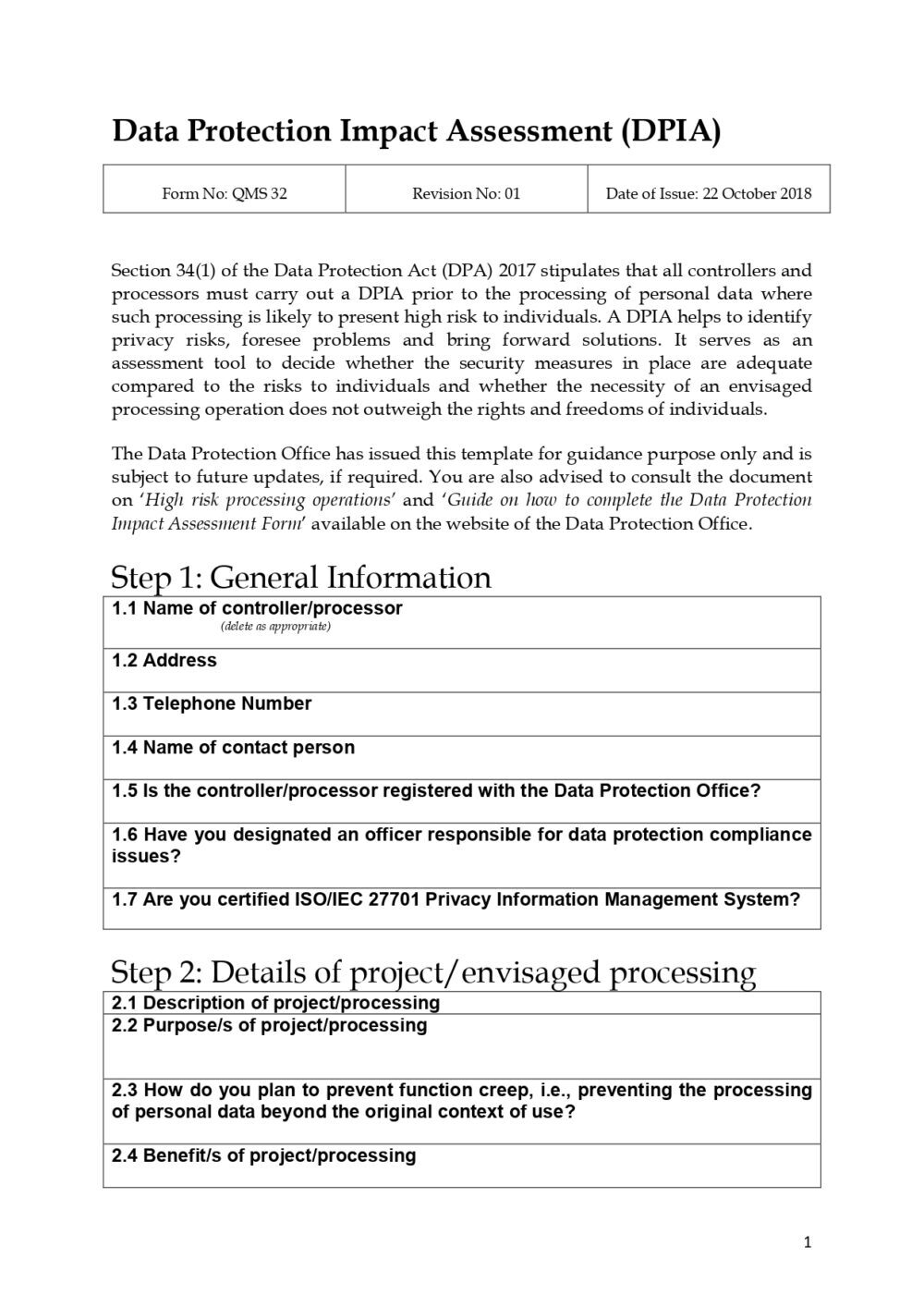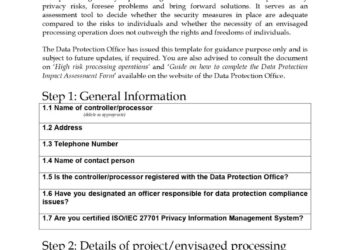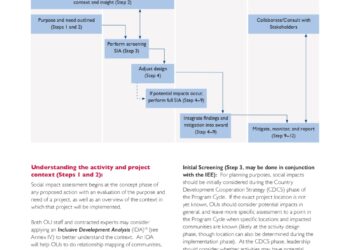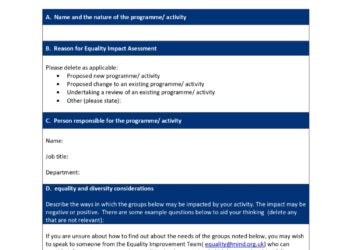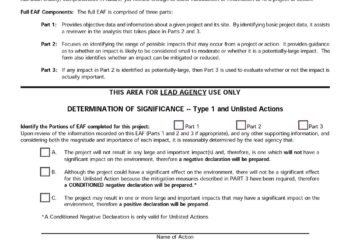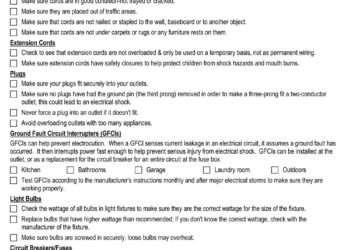Data Protection Impact Assessment (DPIA) templates play an important role in protecting companies from potential data breaches. Not only do they help ensure that private information is secure, but they also provide a comprehensive look at how the data is used and stored. By having the templates in place, companies can quickly identify any weaknesses or gaps in their system and address any concerns before it’s too late.
Moreover, well-made DPIA templates can save time for organizations by streamlining the process of assessing their current situation and designing solutions to protect themselves against data loss. With DPIA templates, companies gain a necessary security layer so they can be better prepared ahead of time in case of a breach.
Data Protection Impact Assessment (DPIA) Template
DPIA 01 |
DPIA 02 |
What is a DPIA?
A DPIA is a formal process used to identify, assess, and mitigate risks associated with the collection, storage, and processing of personal data. It requires organizations to analyze their systems and processes to identify potential privacy issues or security risks. This assessment should be done before any new technology or process is introduced. The purpose of a DPIA is to ensure that organizations are compliant with data protection laws such as GDPR while also protecting the privacy of their customers or users.
Purpose of a DPIA
A DPIA is an assessment of how personal data will be processed and stored, including how it is collected, used, shared, or deleted. It also looks at the types of data being processed and the purposes for which it will be used. The purpose of this assessment is to ensure that businesses are following best practices regarding data protection, as well as identifying any potential privacy risks that could arise from their operations. This includes anything from data breaches to inadequate security measures or even improper use of personal information.
When Should You Do A DPIA?
Organizations should conduct a DPIA whenever they are considering introducing any new technology that involves the collection, storage, or processing of personal data. This includes activities such as using customer contact information for marketing purposes, using facial recognition software on company premises, or deploying automated decision-making tools. Organizations must also conduct regular DPIAs to remain compliant with data protection laws.
How To Conduct A DPIA?
Conducting a DPIA can seem daunting but it doesn’t have to be complicated or time-consuming. Generally speaking, it involves four steps: identification (identifying potential risks), assessment (assessing the risk level), mitigation (taking measures to reduce risk), and reporting (reporting findings). Depending on the size and complexity of your organization’s operations, you may need assistance from an experienced data protection specialist to complete each step successfully.
There are some steps involved in conducting a successful DPIA.
Identify and Assess Data Risks
The first step of a DPIA is to identify and assess the potential data risks associated with your organization’s data processing activities. This includes assessing the magnitude of potential harm that could be caused by accidental or intentional misuse of personal data. To do this, you need to consider what types of personal data are being processed, who has access to it, where it is stored, how secure it is, and so on. By taking all of these factors into account, you can accurately determine which areas pose the greatest risk.
Implement Risk Control Measures
Once you have identified and assessed the risks associated with your organization’s processing activities, you need to take steps to minimize those risks by implementing appropriate control measures. This may involve putting in place physical security measures such as locked doors or access control systems, or technical measures such as encryption or fake name. It may also involve implementing policies and procedures for handling personal data securely. For example, training staff on data protection best practices or introducing clear guidelines around how personal information should be collected and used.
Monitor Compliance
The final step of a DPIA is to monitor compliance with any risk control measures that have been implemented. This involves regular reviews of your organization’s systems and processes to ensure they are still effective at mitigating any identified risks. It also involves ensuring staff continues to stick to relevant policies and procedures related to managing personal information securely. Monitoring compliance should be an ongoing process so that any changes in risk levels can be quickly addressed before any harm occurs.
Identifying Personal Data And Data Flow
When it comes to the implementation of data protection and privacy, identifying personal data and data flow is key. DPIA (Data Protection Impact Assessment) can help organizations decide how best to deploy personal data safely and securely in their systems. It allows companies to identify potential risks early on with processes, employees, hardware, software, etc.
And determine if any corrective actions need to be taken to ensure compliance with privacy standards such as GDPR or CCPA. Through careful risk assessment based on their particular situation, a company can confidently move forward in data use or storage knowing they are acting within the confines of the law putting customers’ rights and sensitive information first.
Benefits of Using DPIA Templates
Using a template helps organizations save time when creating their DPIAs because they don’t have to start from scratch when designing their assessments. Additionally, templates provide a structure that allows teams to quickly assess potential risks associated with their data processing activities in an organized manner. Furthermore, templates simplify the process of identifying areas where further privacy or security measures may need to be implemented in order for organizations to remain compliant with GDPR regulations.
Types Of DPIA Templates Available In The USA
A Data Protection Impact Assessment (DPIA) is a document that outlines the risks associated with data processing activities. It helps organizations understand and address privacy concerns, minimize potential risks, and demonstrate compliance with data protection regulations. In the US, there are several types of DPIA templates available for organizations to use when conducting their assessment. Let’s take a look at what these templates entail.
GDPR Template
The General Data Protection Regulation (GDPR) currently governs how companies process personal data in the European Union. The GDPR provides an excellent foundation for any organization looking to conduct a DPIA in the United States. The GDPR template includes guidance on how to identify data subjects, assess risk factors, and establish appropriate controls. It also covers topics such as data minimization, security measures, and breach notification procedures.
HIPAA Template
The Health Insurance Portability and Accountability Act (HIPAA) is a federal law that protects patient health information in the United States. HIPAA applies to all healthcare entities such as hospitals, clinics, pharmacies, insurance companies as well as business associates who handle protected health information (PHI). If your company deals with PHI or other sensitive patient information, you should use a HIPAA-compliant DPIA template to ensure compliance with this federal law.
CCPA Template
The California Consumer Privacy Act (CCPA) is a state law that regulates how companies collect and store consumer data in California. Companies that do business in California must comply with CCPA requirements if they meet certain criteria such as collecting personal information from more than 50,000 people or earning more than $25 million annually or facing hefty fines. Organizations that operate in California should use a CCPA-compliant DPIA template to ensure their assessment meets all applicable laws and regulations.
How To Use DPIA Templates Effectively
For organizations looking to ensure that their data processing activities are compliant with GDPR regulations, DPIA templates can be an invaluable resource. When used correctly, DPIA templates can help organizations quickly identify potential problems and risks, as well as take proactive steps to address them.
The key is to customize the template in such a way that it considers all of the organization’s specific needs and operations. This includes providing detailed information about data flow, how data is shared, what security measures are in place, and any other relevant particulars related to the processing activities. By taking the time to thoroughly customize a DPIA template with this type of information, organizations can optimize its use in quickly identifying problems and finding solutions to ensure GDPR compliance.
Compliance & Enforcement
Compliance refers to ensuring that your organization meets all of the legal requirements set forth in the GDPR. This includes implementing internal policies and procedures related to data protection measures, such as informing customers about their rights regarding their personal data, having processes in place for responding to requests from customers concerning their personal data, and providing adequate security measures for the protection of customer data.
Enforcement refers to making sure that those who don’t follow regulations will face consequences – this could include fines or other disciplinary actions depending on the severity of non-compliance. Organizations should be aware of what type of enforcement will be used in order to stay within legal limits while still protecting customer privacy effectively.
Using a DPIA template can help organizations keep track of all the processes necessary for both compliance and enforcement, making it easier for them to remain compliant with GDPR standards while avoiding any potential penalties due to noncompliance.
Conclusion
Data Protection Impact Assessments are essential for ensuring that organizations are properly managing their use of personal data. By understanding what a DPIA is and why it’s important, IT professionals and other decision-makers can ensure that their organization remains compliant with relevant data protection laws while also protecting the privacy rights of their customers or users. Ultimately, a well-conducted DPIA will help your organization achieve its goals while remaining accountable for its actions when collecting and using personal data.


